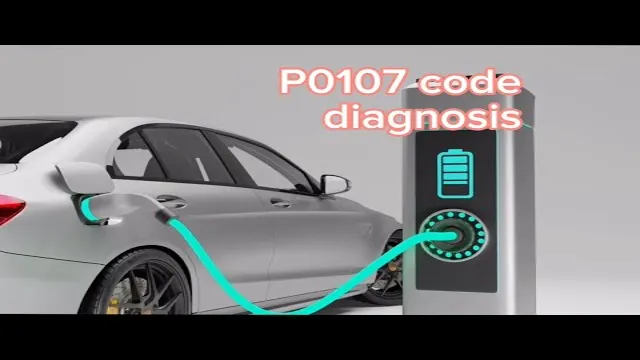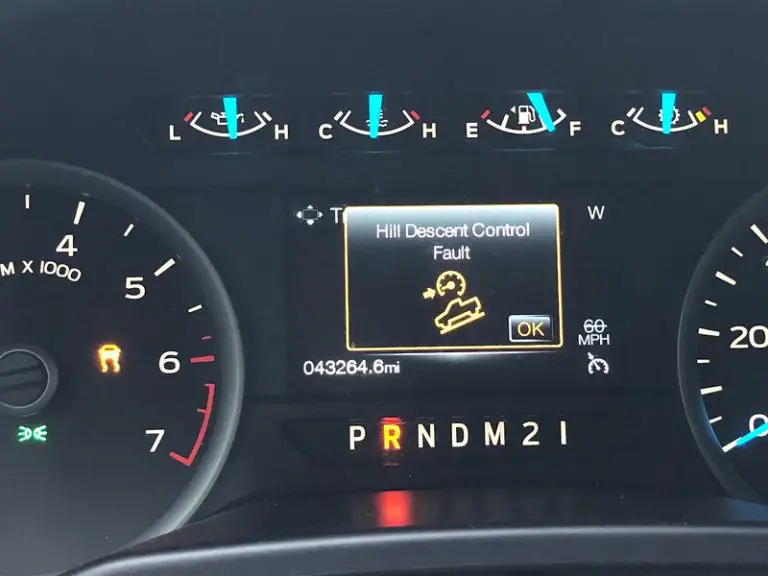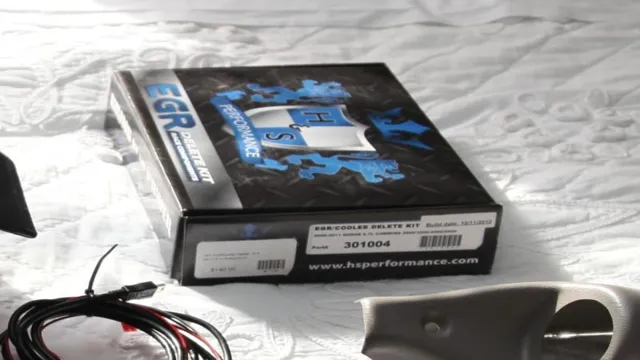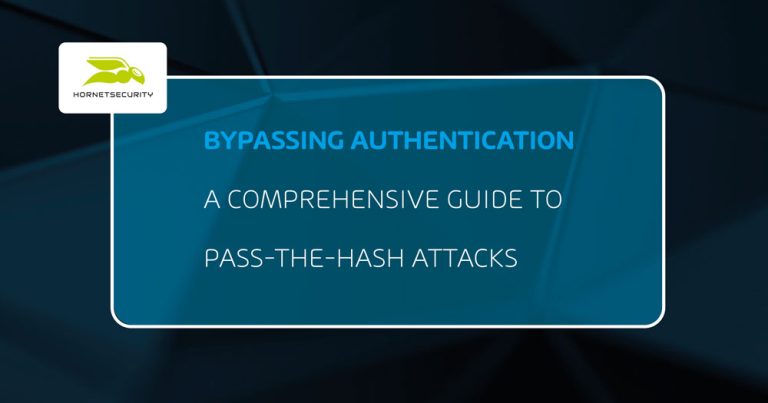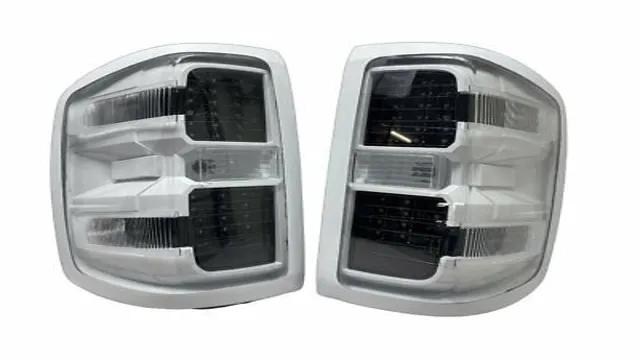Unlock the Mystery: Simple Steps to Fixing the OBD-II P0107 Code
Have you been experiencing issues with your vehicle’s engine? Have you noticed a decrease in performance or an increase in fuel consumption? Well, it’s possible that you may have a P0107 code. But don’t panic just yet! In this comprehensive guide, we’ll be discussing everything you need to know about the P0107 code and how to fix it. Firstly, let’s break down what the P0107 code means.
It’s essentially a code that indicates a problem with the MAP (manifold absolute pressure) sensor. This sensor is responsible for measuring the pressure inside the intake manifold and providing this information to the engine control module (ECM). The ECM then uses this information to calculate the correct air/fuel ratio for optimal engine performance.
Now that you know what the P0107 code means, let’s move onto how to fix it. One common cause of this code is a faulty MAP sensor. Luckily, replacing this sensor is an easy and affordable fix that can be done by a mechanic or DIYer with some basic tools.
However, it’s important to note that a faulty sensor isn’t always the cause of this code. Other factors like vacuum leaks, wiring issues, or a damaged PCM (powertrain control module) can also cause the P0107 code to appear. In conclusion, the P0107 code can be a cause for concern, but it’s nothing to stress over.
By understanding what this code means, the potential causes, and how to fix it, you’ll be able to diagnose and repair the issue quickly and effectively. Always consult with a qualified mechanic if you’re unsure about any repairs.
What is P0107 Code and Why Does it Appear?
If you’ve ever experienced a check engine light illuminating on your car’s dashboard, you know the frustration that comes with trying to figure out what’s wrong. One possible culprit is a P0107 code, which relates to a problem with the manifold absolute pressure (MAP) sensor. This sensor, found in most modern cars, measures the amount of air entering the engine and helps regulate fuel delivery, timing, and other engine operations.
When the MAP sensor is malfunctioning or giving faulty readings, it can cause a range of issues, from poor acceleration to engine stalling. To fix a P0107 code, mechanics typically start by inspecting the sensor itself and its wiring and connections. If those appear to be in good condition, they may move on to checking for vacuum leaks, fuel pressure issues, or other related problems.
With some patience and persistence, most cases of the P0107 code can be solved relatively easily and without significant cost.
Definition of P0107 Code and its Causes
The P0107 code is an OBD-II error code that relates to the Manifold Absolute Pressure (MAP) sensor circuit. When this code appears, it indicates that there is an issue with the MAP sensor circuit and that the signal sent from the sensor to the Engine Control Module (ECM) is out of range. The MAP sensor is responsible for monitoring the pressure inside the intake manifold and sending that information to the ECM so that it can adjust the air-fuel ratio.
If the sensor is not working properly, it can provide erroneous data to the ECM, causing issues with the engine’s performance. The reasons why the P0107 code appears can be varied, and can include a faulty MAP sensor, wiring issues, or a problem with the ECM itself. It’s important to have the issue diagnosed and repaired promptly to avoid further damage to the engine.
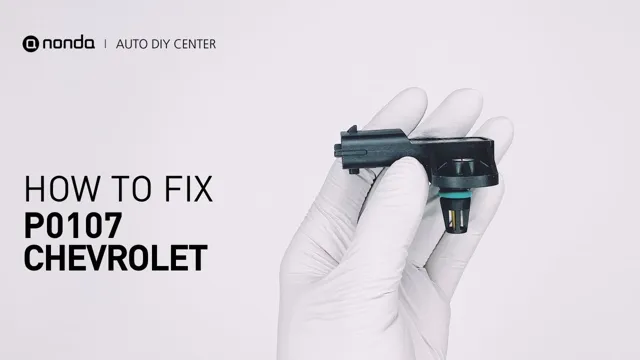
Symptoms of P0107 Code
P0107 Code If you’re experiencing issues with your car’s engine performance, the P0107 code might be the culprit. This code, which is triggered when there is a problem with the manifold absolute pressure (MAP) sensor circuit, can lead to a number of symptoms that can make driving your car a frustrating experience. One of the most common symptoms of the P0107 code is a lack of power or acceleration when you press the gas pedal, which can cause your car to feel sluggish or unresponsive.
Other symptoms can include rough idling, stalling, or even a complete failure to start. If you notice any of these symptoms in your car, it’s important to get your vehicle checked out by a trusted mechanic as soon as possible to prevent further damage to your engine. Don’t let the P0107 code get you down – with the help of a skilled mechanic, you can get your car back on the road and running smoothly again.
How to Fix P0107 Code?
If you’re experiencing the P0107 code on your vehicle, there are a few ways to fix it. First, check the vacuum hoses and air filter for any signs of blockage or damage. A dirty air filter can restrict the airflow, leading to the code.
If everything seems fine there, the next step is to inspect the Mass Airflow Sensor (MAF). This sensor measures the amount of air entering the engine and if it’s faulty, it can send incorrect signals to the computer, triggering the P0107 code. You can try cleaning the MAF sensor with a specialized cleaner or even replace it if necessary.
Another potential culprit is the Ground Wire. If it’s loose, corroded, or damaged, it can cause the P0107 code too. In this case, you may need to repair or replace it.
Ultimately, the best course of action is to bring your vehicle to a trusted mechanic to diagnose and fix the problem. They have the equipment and expertise to pin-point the issue, ensuring your vehicle runs efficiently again.
Check If Your Car Is Compatible With This Code Fix
If you are experiencing a P0107 code on your car, indicating an issue with the Manifold Absolute Pressure (MAP) sensor circuit low voltage, you may be wondering how to fix it. The first step is to check whether your car is compatible with this code fix. This code is common in vehicles that have a MAP sensor, and it can affect both older and newer models.
Some cars may require specific software or tools to diagnose and fix the issue, so it’s essential to research beforehand. Assuming your car is compatible with this code fix, the next step is to replace the faulty part. The MAP sensor is responsible for measuring the air pressure in the engine’s intake manifold, which affects fuel regulation, ignition timing, and other critical functions.
A malfunctioning sensor can cause various issues, such as poor fuel economy, reduced engine performance, and even stalling or misfiring. To fix the P0107 code, you will likely need to replace the MAP sensor itself, which is relatively easy and inexpensive. However, it’s essential to make sure that the new sensor is compatible with your car’s make and model and that you install it correctly.
Otherwise, you may end up causing more significant issues with your vehicle. In conclusion, fixing a P0107 code can be a simple process if done correctly, but it’s crucial to check your car’s compatibility and ensure that you’re replacing the correct part. Always do your research beforehand and consider seeking professional help if you’re unsure or inexperienced.
This way, you can avoid causing further damage and ensure your car runs smoothly and efficiently.
Method 1: Check for Faulty Manifold Absolute Pressure (MAP) Sensor
If you’ve been thrown a P0107 code, the first thing you should check is your Manifold Absolute Pressure (MAP) sensor. This sensor is responsible for reading the air pressure in your engine’s intake manifold and sending this information to your vehicle’s computer. When this sensor fails or malfunctions, it can cause a variety of issues with your car’s overall performance.
To fix this issue, you can try cleaning your MAP sensor or replacing it altogether. Cleaning the sensor involves removing it from the engine, spraying it with specialized cleaner, and then allowing it to dry before reinstallation. If cleaning doesn’t work, you may need to replace the sensor entirely.
This can easily be done by purchasing a new sensor from a reputable auto parts dealer and swapping it out with the old one. With this simple fix, you’ll be able to turn off that pesky Check Engine light and get back to enjoying driving your vehicle.
Method 2: Inspect the Wiring and Connectors
One way to fix the P0107 code is by inspecting the wiring and connectors. The P0107 code is often caused by a malfunction in the MAP sensor circuit, and this can be due to damaged wiring or faulty connectors. Inspecting the wiring and connectors is a relatively simple process, and it can be done with just a few basic tools.
Start by visually inspecting the wiring for any signs of damage or fraying. Next, check the connectors for any signs of corrosion or damage. If any damage is found, it is important to repair or replace the affected components.
This step will likely resolve the issue and clear the P0107 code. However, if the code persists, it may be necessary to replace the MAP sensor or perform further diagnostic testing. By inspecting the wiring and connectors, you can easily rule out any issues that may be causing the P0107 code and ensure that your vehicle is running smoothly and efficiently.
Method 3: Check for Vacuum Leaks
If you’re experiencing a P0107 code, it might be a sign of a vacuum leak in your engine. One option to fix this issue is to locate and fix any vacuum leaks in your engine. Do a thorough check of your vacuum lines, sensor connections, and intake manifold for any signs of wear or damage.
A damaged or disconnected vacuum line could lead to air bypassing the MAF sensor, causing the code to appear. You can also use a smoke machine to help locate any leaks that may be hard to find. Once you’ve located the leak, simply replace or repair the damaged component, and clear the code.
This method can be a quick and cost-effective way to fix a P0107 code. Remember, a vacuum leak can cause poor engine performance and potential damage if left unchecked, so it’s important to address the issue as soon as possible.
Final Thoughts and Maintenance Tips
If you’re struggling with a p0107 code, there are a few steps you can take to fix the issue. First, check your mass airflow sensor (MAF). This sensor measures the air entering the engine and sends that information to the vehicle’s computer.
If it’s malfunctioning, it can cause the p0107 code to appear. You can clean the MAF with a specialized spray that can be found at most auto parts stores. If cleaning doesn’t work, you may need to replace the sensor.
Additionally, you should check your air filter, as a dirty or clogged filter can also cause the p0107 code. Regularly maintaining your MAF and air filter can help prevent this issue from recurring. If you don’t feel comfortable doing these checks yourself, don’t hesitate to take your vehicle to a professional mechanic.
After all, keeping your car in good working order is essential to keeping yourself safe on the road.
Regular Maintenance Can Prevent P0107 Code from Appearing
The P0107 code can be frustrating for car owners, but fortunately, it can typically be prevented by regular maintenance. One of the major causes of this code is a faulty sensor, which can be caused by build-up of debris or wear and tear. Regularly checking and cleaning the sensor can help to prevent this issue from occurring.
Additionally, keeping up with regular oil changes and air filter replacements can prevent debris from accumulating in the engine and potentially causing sensor issues. When it comes to preventative maintenance, it’s always better to be proactive rather than reactive. By staying on top of regular maintenance tasks, you can prevent annoying issues like the P0107 code from occurring in the first place.
Consult a Professional Mechanic If the Issue Persists
If you’ve tried all the possible solutions and the issue with your vehicle still persists, it’s best to consult a professional mechanic. They have the expertise and tools needed to diagnose the problem accurately and provide the best solution. Don’t try to fix the problem on your own as this may worsen the situation and lead to costlier repairs.
It’s always better to seek professional help when you’re unsure or dealing with a complicated issue. Additionally, make sure to maintain your vehicle regularly by scheduling regular check-ups and following the manufacturer’s instructions. This will help prevent potential issues from arising and prolong your vehicle’s lifespan.
Taking care of your vehicle is crucial, not only for its longevity but also for your safety on the road. So make sure to pay attention to any signs of malfunction and address them promptly.
Conclusion
In the end, fixing the P0107 code just requires a little detective work and a willingness to get your hands dirty. Whether it’s cleaning your MAF sensor or replacing a faulty vacuum hose, taking the time to investigate and fix the problem will ultimately save you money and keep your car running smoothly. So, don’t let this pesky little code get you down – embrace the challenge and get back on the road in no time!”
FAQs
What is a P0107 code and what does it mean?
The P0107 code is a trouble code indicating a problem with the Manifold Absolute Pressure (MAP) sensor circuit. It means the sensor is reading a signal that is outside of the expected range or that the sensor circuit is malfunctioning.
How can I diagnose a P0107 code?
In order to diagnose a P0107 code, you can use a scan tool to check for codes and view live data from the MAP sensor. You can also visually inspect the wiring and connections of the MAP sensor circuit and test the voltage and ground circuits.
What are common causes of a P0107 code?
Common causes of a P0107 code include a faulty MAP sensor, a short or open circuit in the sensor wiring, a disconnected or damaged vacuum line, or a malfunctioning Powertrain Control Module (PCM).
How do I fix a P0107 code?
To fix a P0107 code, you can start by checking and repairing any damaged or disconnected vacuum lines. You can also check the wiring and connections of the MAP sensor circuit and repair any issues found. If necessary, the MAP sensor may also need to be replaced.

